
via: Pexels / RODNAE Productions
This guide is all about the types of scissors.
As a handyman, I've always been adamant about using the right tools. I've even said it in a lot of my housekeeping articles. Having the right tools makes all the difference- even with a fairly basic device like a scissor.
Did you know that there are a lot of different scissors? There are regular cutting scissors, scissors as a sewing tool, and scissors for crafting.
Believe it or not, there's more where that came from. Get to know the types of scissors with this cutting-edge guide.
Contents
Ultimate List of Types of Scissors You Need To Know
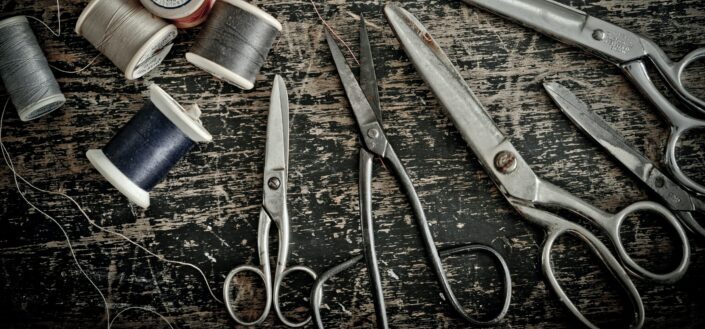
via: Unsplash / Margaret Jaszowska
You use it for cutting a piece of paper, gardening, grooming, and even cooking. You almost always need a scissor for every task- whether you're cutting or sewing, for fabric or hair, and whether it's a straight blade or curved blade.
I guess you could say scissors are universal.
Contents
The 4 Best Types of Scissors: All Purpose
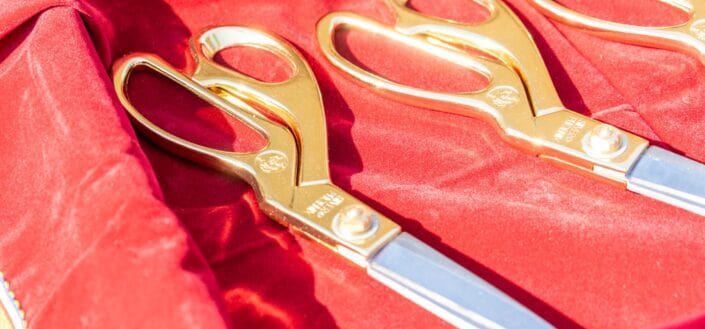
via: Unsplash / Winston Chen
These well-rounded cutting tools are perfect for even the most mundane household chore, office projects, or another day of helping your kids with their art projects.
>
1. Crafting scissors
Crafting scissors are every arty crafty's best friend. Its long blades and pointy tips make it great for getting into small areas and cutting paper, cardboard, twine, yarns, thin wires, and other light cutting.
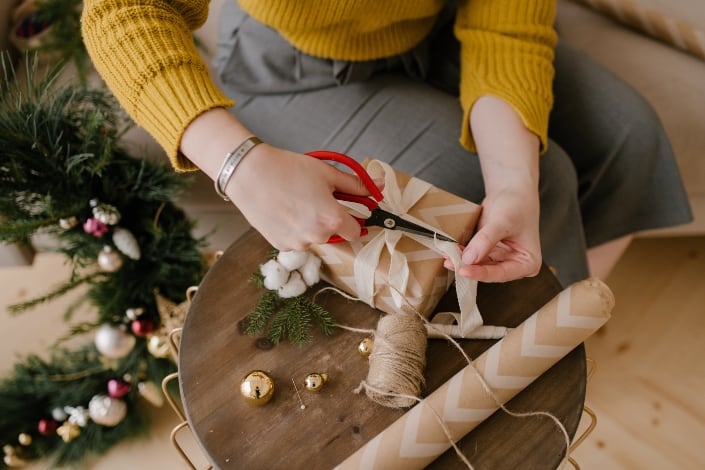
via: Pexels / Julia Volk
2. Standard Scissors
Much like a crafting scissor, standard scissors have long, straight blades that cut through common household or office materials like plastics, cardboards, string, or cloth.
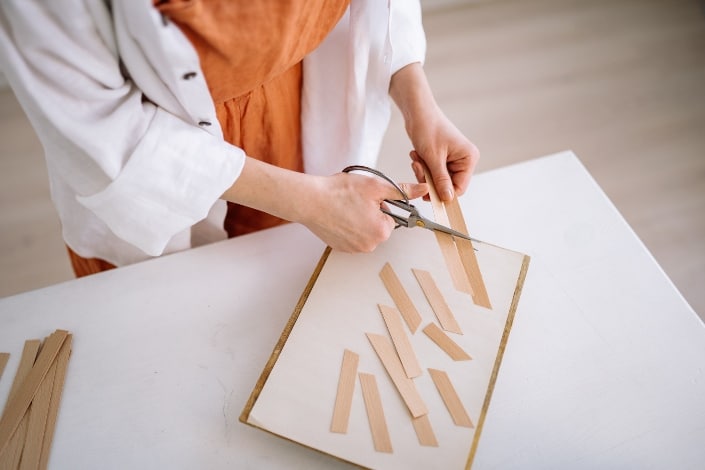
via: Pexels / Yan Krukov
3. Trimming Scissors
Trimming scissors serve different functions depending on your task at hand.
Tailors would use them to trim away excess fabric, clip seams, and facings and refer to them as sewing scissors.
In gardening, they are used to trim the buds and leaves of the plants.
A groomer or a hairdresser would use it to give haircuts a softer finish.

via: Pexels / Kampus Production
4. Industrial Scissors
Industrial scissors are heavy-duty scissors that have sharp blades strong enough to cut through heavy or thick materials.
Examples of industrial scissors are kitchen scissors or kitchen shears used in meat shops and restaurants for cutting poultry or fish.

via: Pexels / RODNAE Productions
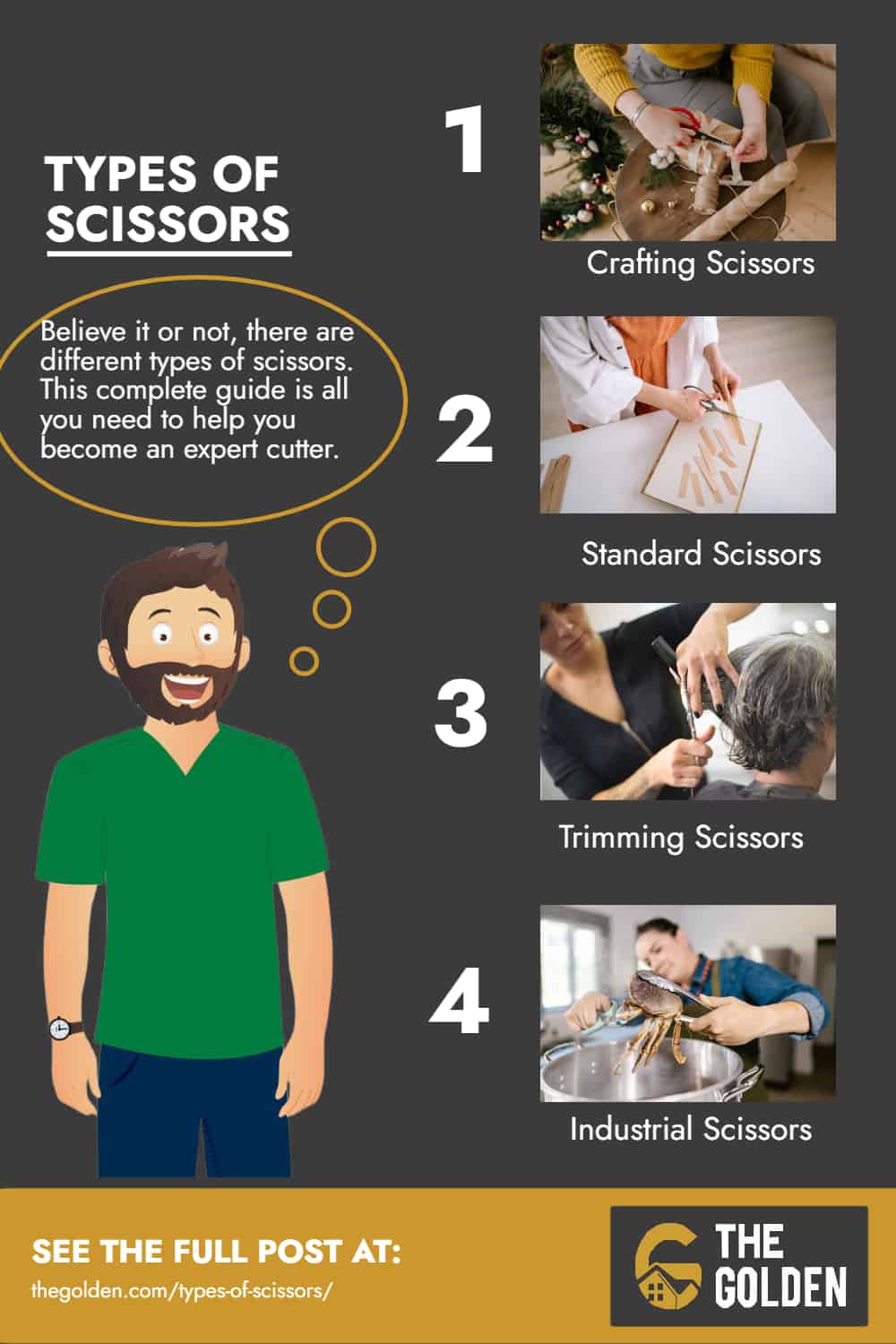
via: The Golden
Share This Image On Your Site
7 Scissors For Your Sewing Sessions

via: Unsplash / Kris Atomic
Sewing tools are a staple in every home. If you're a new homemaker or a newbie in the art of stitching, getting yourself familiar with the basic tools like the different kinds of sewing scissors will always come in handy.
5. Pinking Shears
Pinking shears have sawtoothed blades instead of straight ones and are used to cut zigzag patterns on fabrics to prevent them from fraying on the hems.

via: Unsplash / Edz Norton
6. Dressmaking scissors
Dressmaking scissors or fabric scissors have extremely sharp blades that are usually fifteen centimeters or six inches long and are designed for cutting any type of fabric.
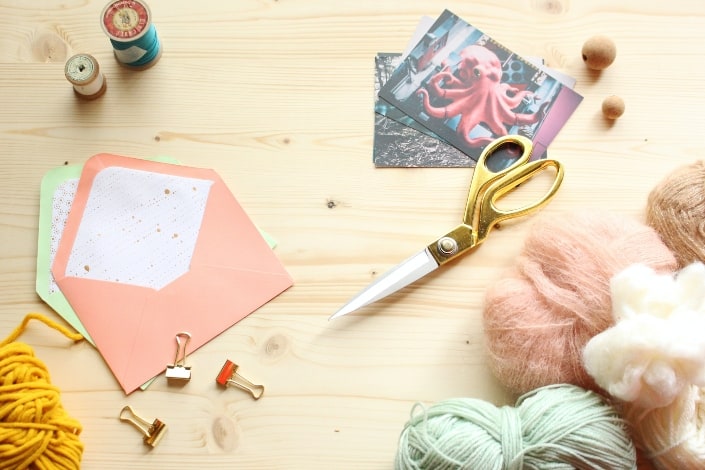
via: Unsplash / Myrlene NUMA
7. Thread Snippers
Thread snippers are every sewer and yarn crafters' best friend. A thread snipper is a spring-loaded cutting tool with small, thin blades for snipping threads, fabrics, and yarns.
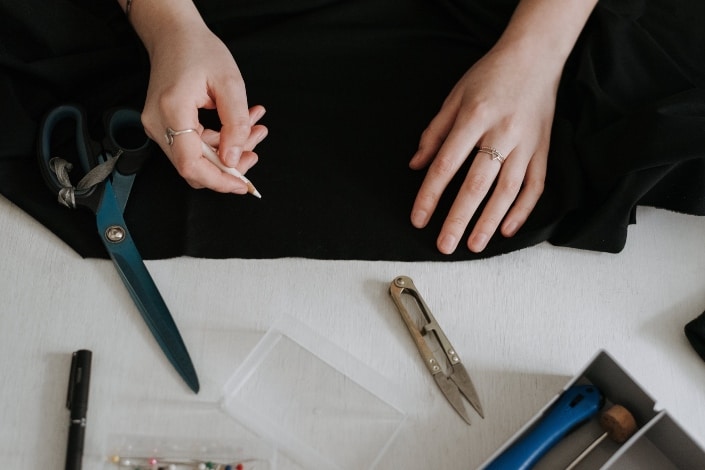
via: Pexels / Anete Lusina
8. Embroidery Scissors
Embroidery scissors are made just for cross stitch and embroidery enthusiasts. They have long, point blades perfect for snipping threads and rough stitches.

via: Pexels / Olya Kobruseva
9. Bent Handle Scissors
Bent handle scissors have blades parallel to the surface of a cutting table, making cutting out patterns and designs on fabric more seamless and easier.
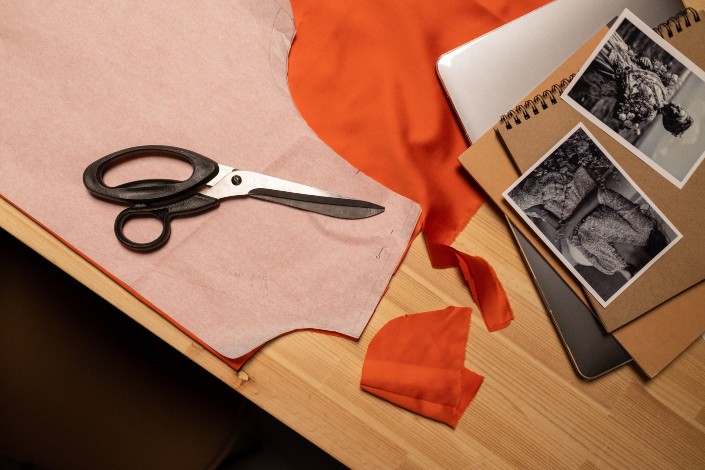
via: Pexels / Ron Lach
10. Thread Clipper
Thread clippers are just like thread snippers made for notching buttonholes and nipping excess threads on fabrics.
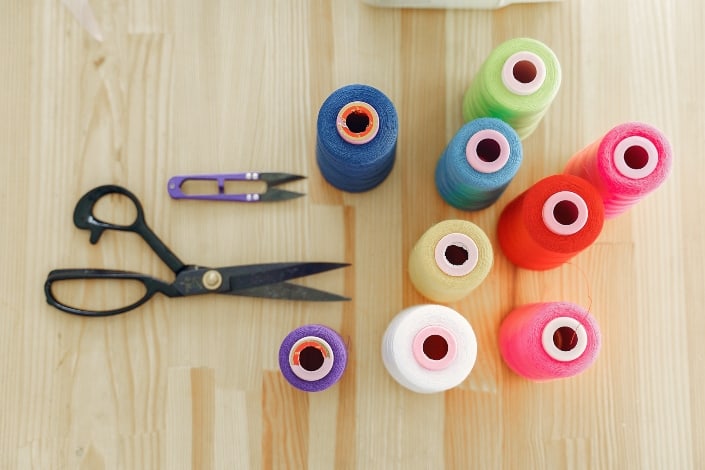
via: Pexels / Gustavo Fring
11. Tailor's Scissors
A tailor's scissors feature short but heavy-duty blades used by tailors, quilters, and crafters for cutting any kind of fabric with ease.
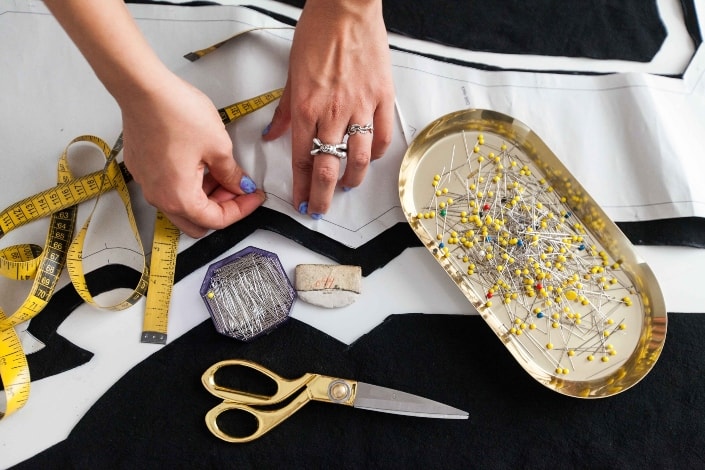
via: Pexels / Los Muertos Crew
5 Must-have Hairdressing Scissors

via: Unsplash / Allyson Carter
Knowing how to cut your own hair had proven to be a convenient life skill when we were forced to stay at home and salons closed during the surge of the pandemic.
12. Long-Bladed Barbering Scissors
Long-bladed barbering scissors are perfect for snipping a greater surface area of hair in one go. Its long blades ensure a clean and even cut.
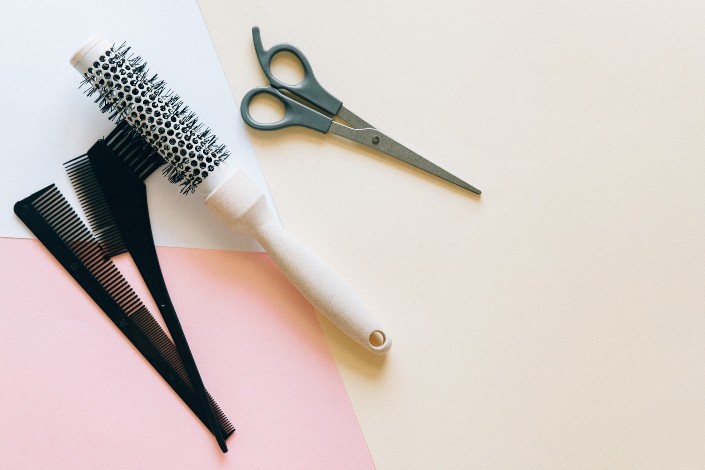
via: Pexels / Nataliya Vaitkevich
13. Wide-Tooth Thinner Scissors
Wide-tooth thinner or thinning scissors have blades that feature "teeth" designed to thin out chunks of hair. Hairdressers would often use this type of scissors for clients with curly, thick, or coarse hairs.
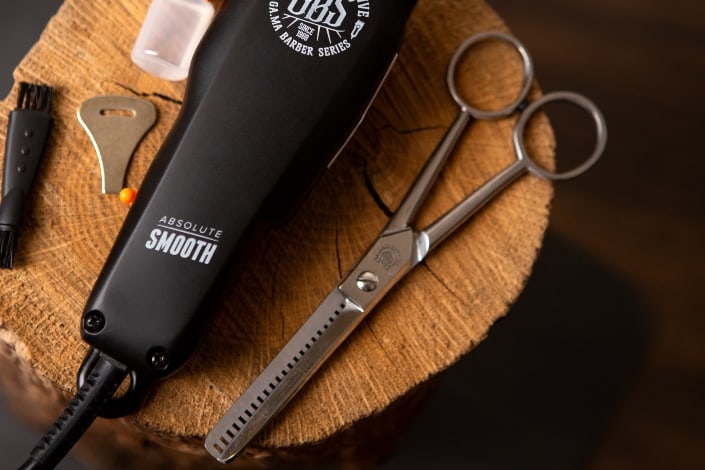
via: Unsplash / Andrea Donato
14. Short-Bladed Cutting Scissors
Short-bladed cutting scissors are lightweight, easy-to-use scissors made for haircutting techniques such as slicing and detailing haircuts.
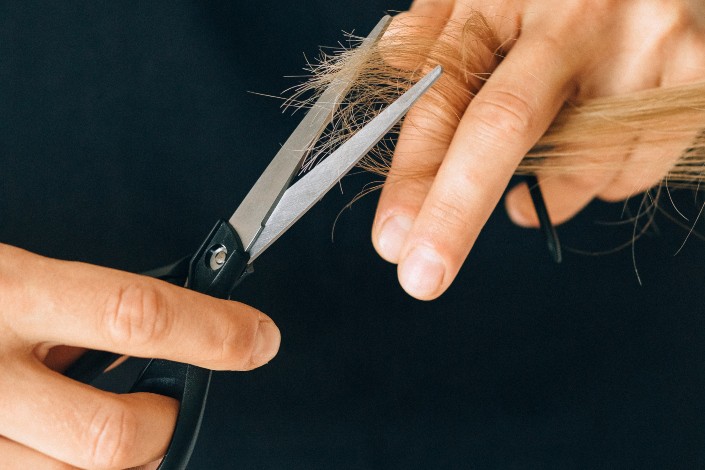
via: Pexels / Nataliya Vaitkevich
15. Blending/Texturizing Scissors
A blending or texturizing scissors have blades with thirty to forty teeth that allow a hairdresser to thin out hair slowly without going overboard or cutting off too much at once.
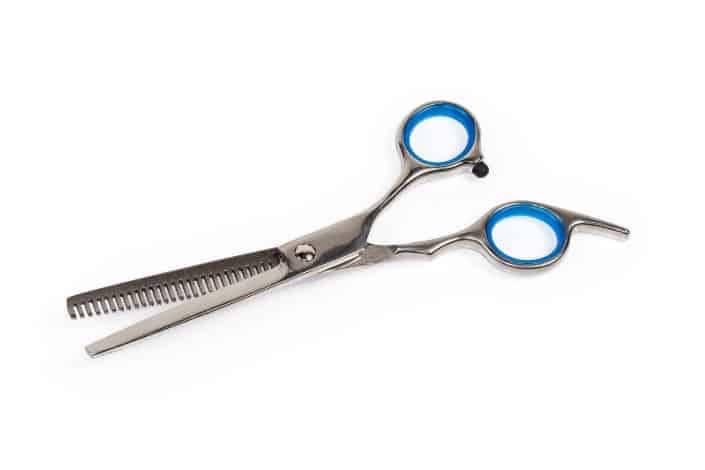
via: Depositphotos / anmbph
16. Swivel Scissors
The most unique part of a swivel scissor is its thumb ring which rotates and matches your hand's natural movement, providing more comfort and making it perfect for long days of haircutting.
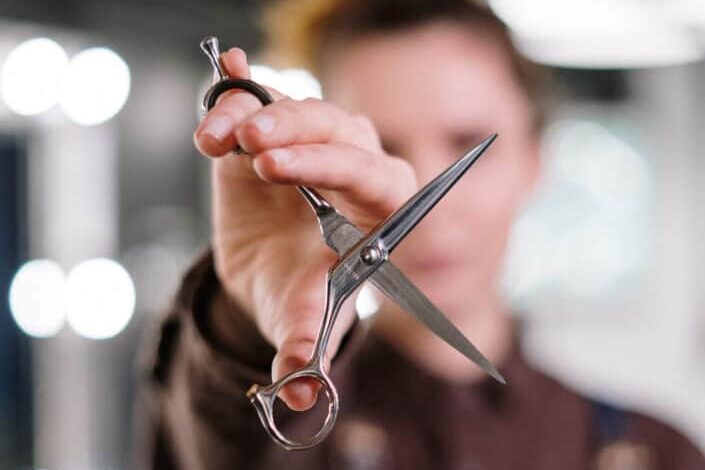
via: Pexels / cottonbro
8 Gardening Scissors For Plant Enthusiasts

via: Unsplash / ThisisEngineering RAEng
Anyone with a green thumb would agree that a perfect pair of gardening scissors is necessary for keeping plants lush and healthy.
17. Grass Shears
Grass shears come in two kinds- those with horizontal blades and those with vertical blades.
Grass shears with horizontal blades are good for cutting up grass missed by a lawnmower. On the other hand, grass shears with vertical blinds are perfect for cleaning up the edges of your lawn.

via: Pexels / Gary Barnes
18. Hedge Shears
Hedge shears are giant scissors with long, straight blades mainly used for trimming and maintaining hedges, bushes, or shrubs.
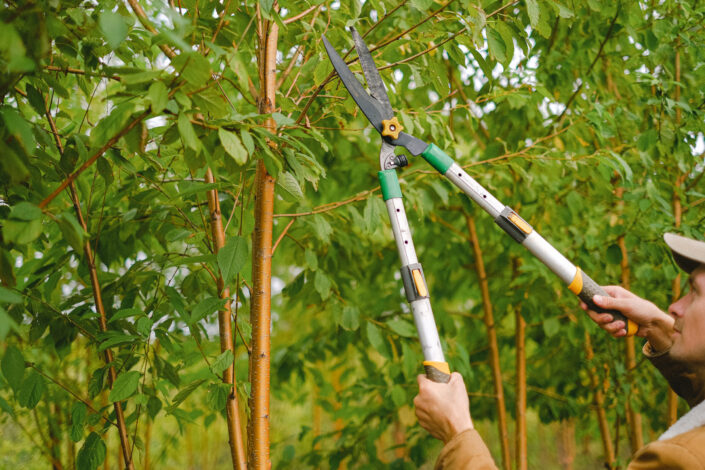
via: Pexels / Anna Shvets
19. Basic Pruning Shears
Pruning shears are gardening tools made for cutting through small branches, twigs, or stems. Pruning shears are perfect for gardeners growing vegetable plants and flowers.
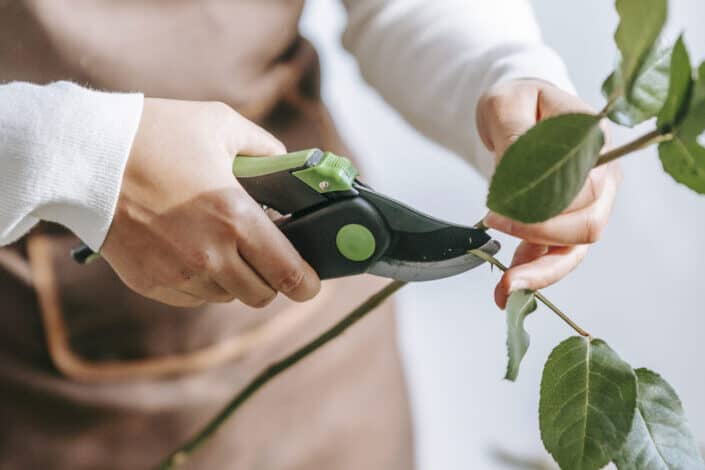
via: Pexels / Teona Swift
20. Thinning Shears
Thinning shears are extra small cutting tools specifically made for growing and maintaining small shrubs or delicate plants like bonsai trees, orchid plants, and roses.

via: Pexels / Gary Barnes
21. Anvil Pruners
An anvil pruner is a small but terrible gardening tool that cuts thicker stems like Calla lilies, dahlias, and daisies.
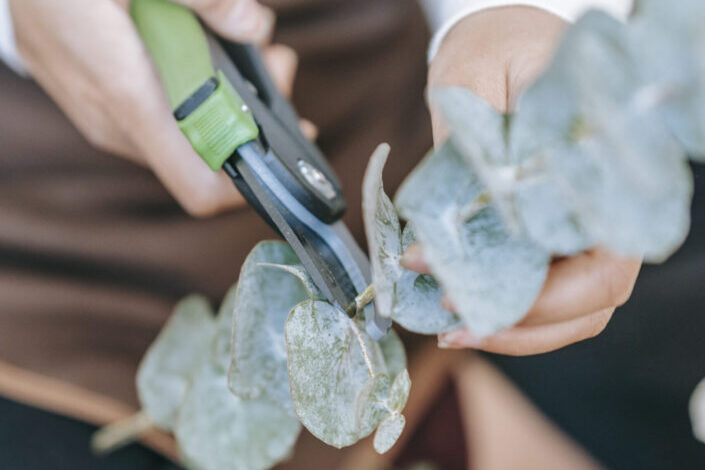
via: Pexels / Teona Swift
22. Needle-Nose Pruners
These pruners cut small, thin branches measuring up to one-fourth inches in diameter. Their straight blades feature a double-ground cutting edge with handles designed for a comfortable and perfect grip.
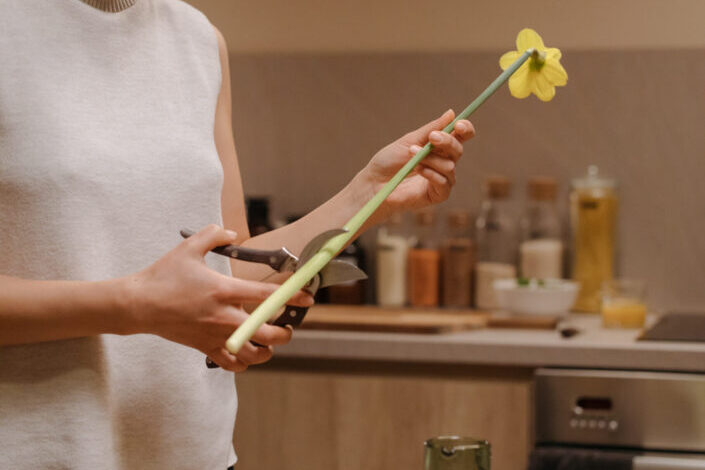
via: Pexels / cottonbro
23. Lopping Shears
A looping shear or lopper is a gardening tool that cut stems or branches measuring up to one and three-fourths inches in diameter. Their large handles come in handy for reaching tall trees with large and thick branches.
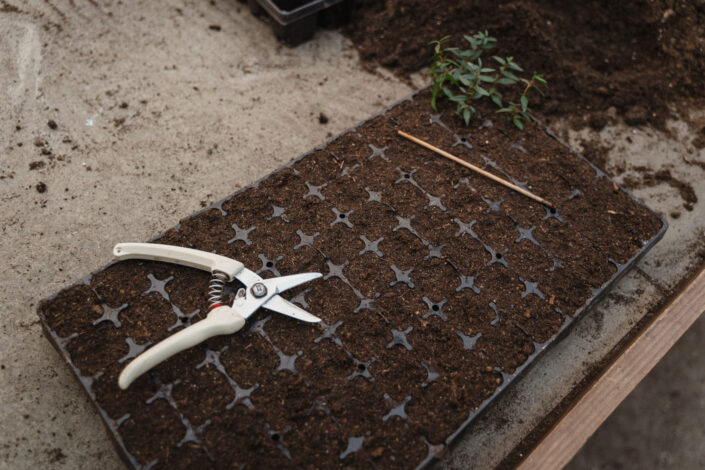
via: Pexels / Tima Miroshnichenko
24. Parrot Beak Shears
Parrot beak shears have curved blades that have a concave and convex edge. Florists commonly use this type of shear for cutting flowers for a bouquet and other flower arrangement pieces.

via: Pexels / Teona Swift
Surgical Scissors For Those In the Medical Field
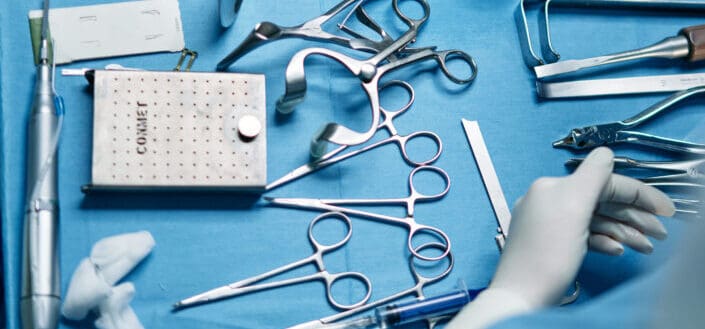
via: Pexels / cottonbro
Scissors are so versatile they're even made for saving lives! These high-grade stainless tools have very specific uses depending on the type of wound or procedure.
25. Bandage Scissors
Bandage scissors, also called bandage forceps, are made with blades with an angled tip and blunt tip for the bottom blade. Nurses often use this cutting tool for cleaning wounds and cutting bandages without the blades scraping the skin.
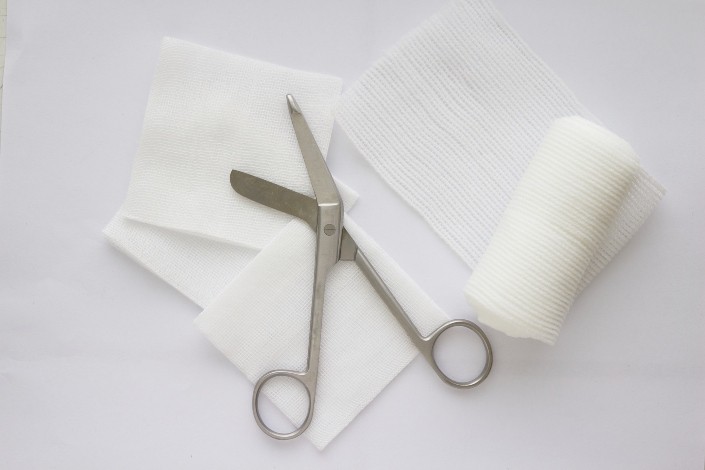
via: Depositphotos / Vachphoto
26. Dissecting Scissors
Dissecting scissors are specialty scissors made for separating and cutting through soft tissues during a surgery or operation.
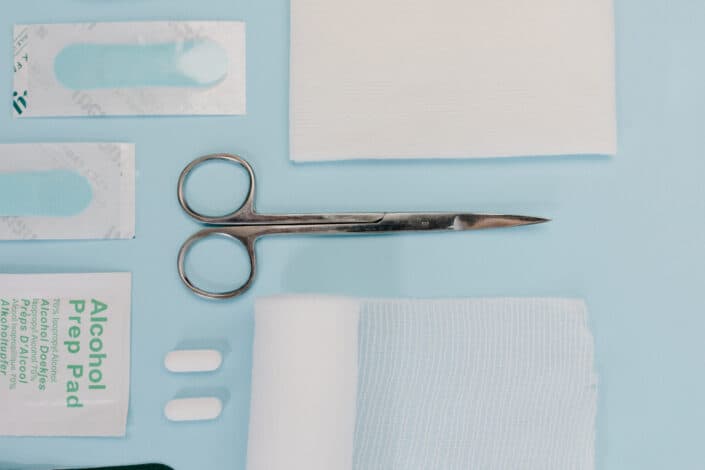
via: Pexels / Tara Winstead
27. Iris scissors
Iris scissors are short-bladed specialty scissors with two sharp tips perfect for cutting delicate tissues and are commonly used for intricate surgeries.

via: Pexels / Mikhail Nilov
28. Stitch scissors
Stitch scissors are surgical scissors primarily used for removing sutures. One of its blades has a small hook-shaped tip that slides under a suture, making it easier to remove surgical stitches.
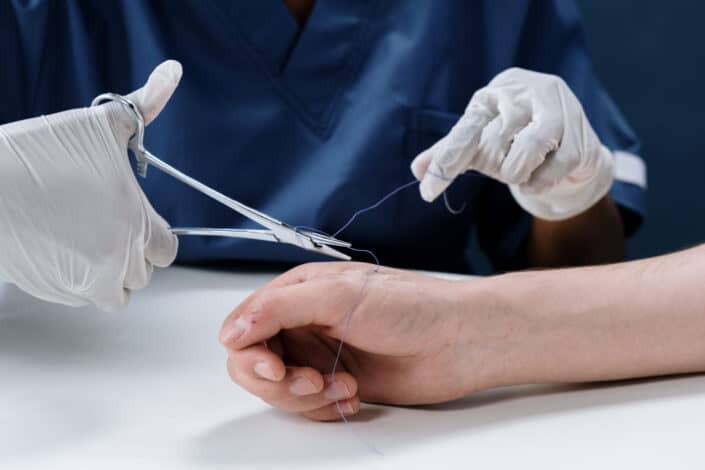
via: Pexels / cottonbro
29. Tenotomy scissors
Tenotomy scissors are surgical scissors best used for delicate operations like brain or heart surgery.
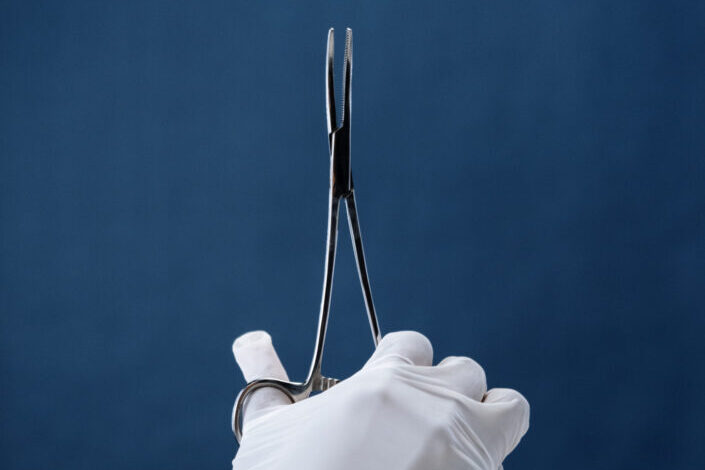
via: Pexels / cottonbro
30. Metzenbaum scissors
Metzenbaum scissors or "Metz" are medical scissors with a curved blade used for dissecting or cutting fragile tissues or organs.
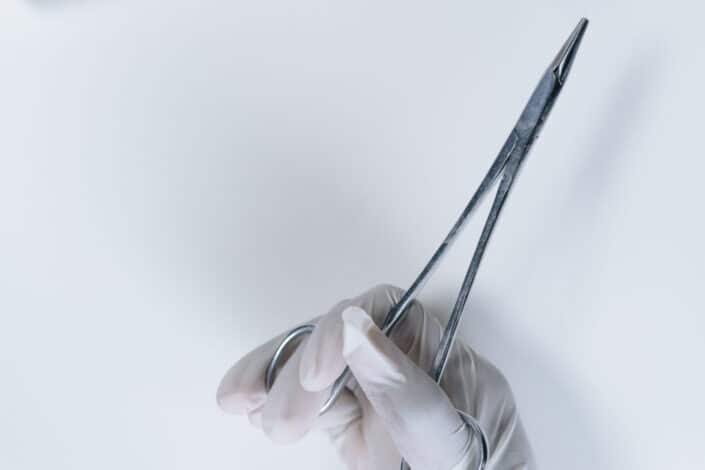
via: Pexels / cottonbro
31. Mayo scissors
Unlike "Metz," mayo scissors have sharp, blunt blades that cut through thick tissues that are mostly found in muscles, breasts, and the uterus.
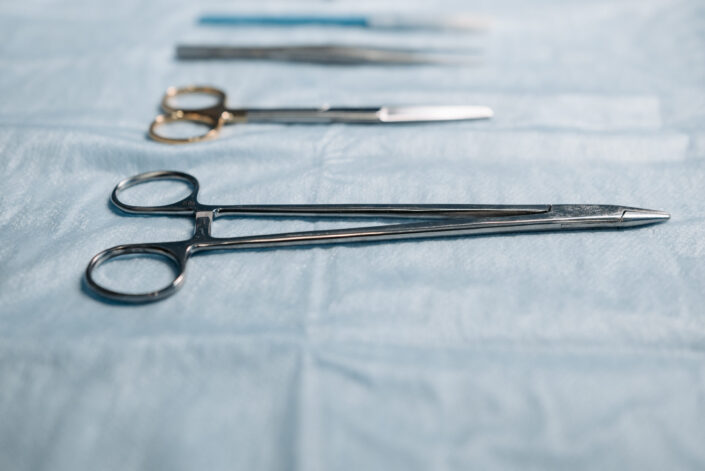
via: Pexels / Pavel Danilyuk
Downloadable and Printable List Of Types Of Scissors
Here is a downloadable and printable jpg/pdf list of types of scissors (right-click the image and select Save Image As...):
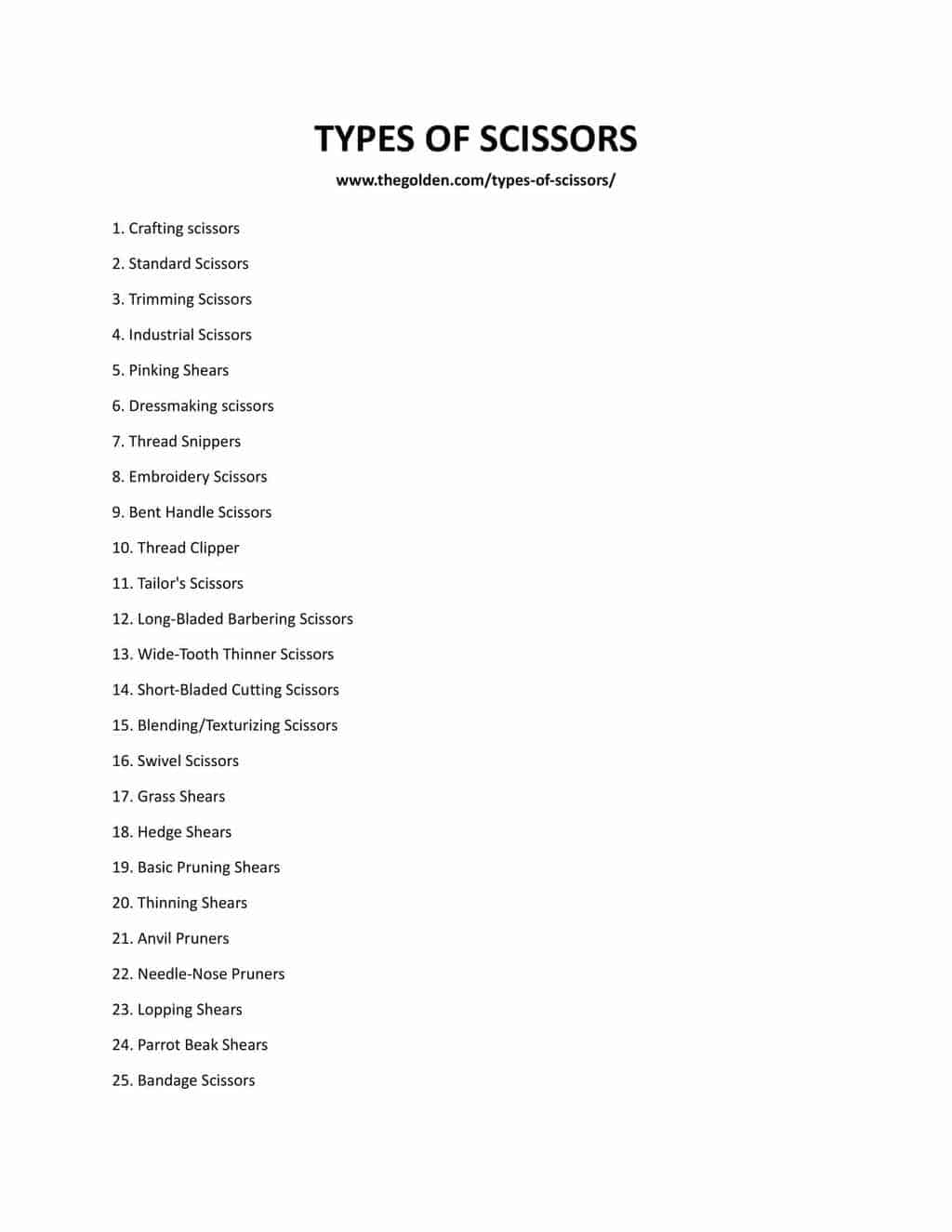
via: The Golden
How To Make Your Scissors Sharp
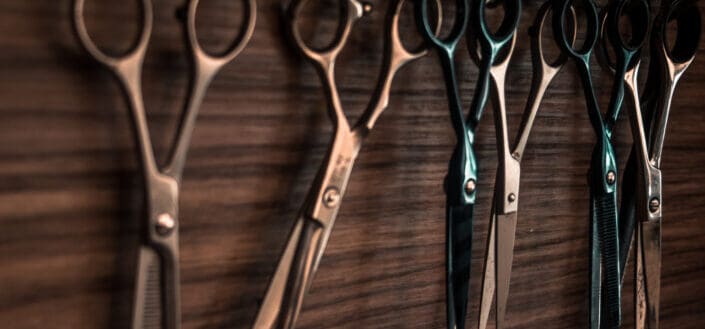
via: Pexels / Nick Demou
Scissors are made for cutting, so keeping them sharp is a must. Here is how you can keep your snippers snappy.
1. With a Sharpening Stone
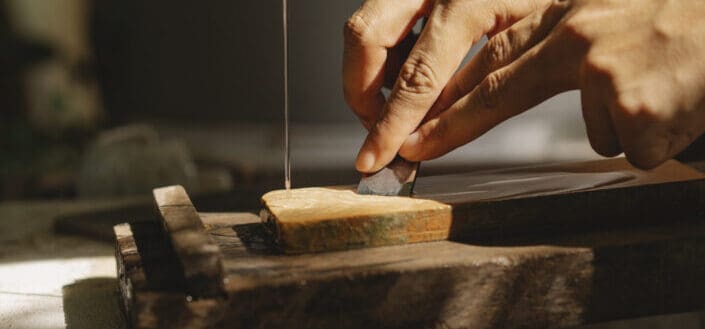
via: Pexels / Ono Kosuki
Start by wetting the surface of the stone with honing oil or water. Then, separate the blades by disassembling them with a screwdriver.
With the inner side of the blade on the stone, slowly run it across the stone toward you, keeping its edge flat against the stone. Repeat this process for ten to twenty strokes for each blade until the blade has been sharpened.
Do the same thing when sharpening your scissors' beveled edge.
2. With a Rotary Tool
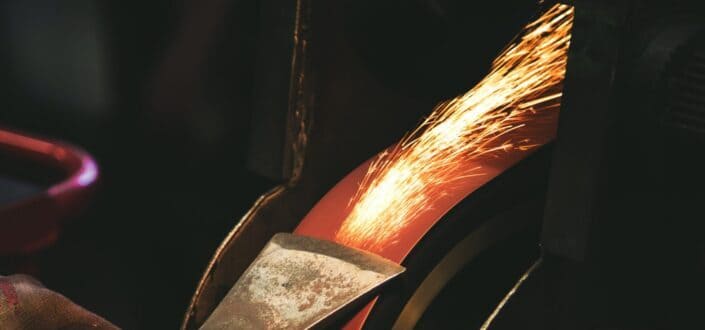
via: Unsplash / C D-X
First, disassemble the blades for easy sharpening. Then, position the blade so that the beveled edge faces upward. Insert the grinding stone into the Dremel and turn it on.
Sharpen your blade by moving it against the rotating grinding stone at a ten-degree angle.
Cleaning And Storage Methods
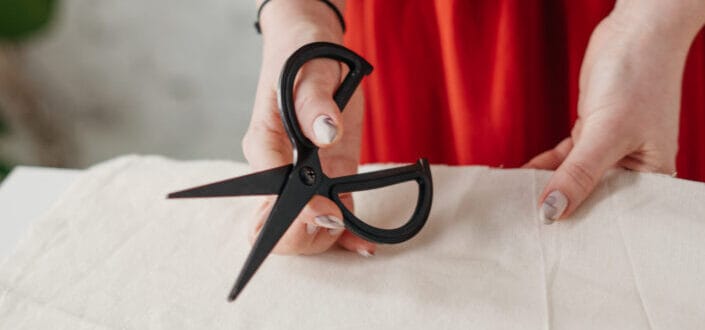
via: Pexels / cottonbro
Good quality scissors are only as good as how you take care of them. Follow these tips to keep your pair well for years.
1. Cleaning

via: Pexels / Karolina Grabowska
In most cases, cleaning your scissors with water and dish soap is enough to clear away gunk build-up.
For removing stubborn dirt or sticky residues, using a soft cloth dipped in paint thinner works best. An acetone nail-polish remover works too.
For removing rusts off your sharp blades, wiping it with cotton soaked in white vinegar never fails.
2. Lubricating

via: Unsplash / Kelly Sikkema
To keep its sharp blades moving smoothly and without tension, you got to oil the joints at least once a month. I love using WD-40, but any household oil works just fine.
3. Storage
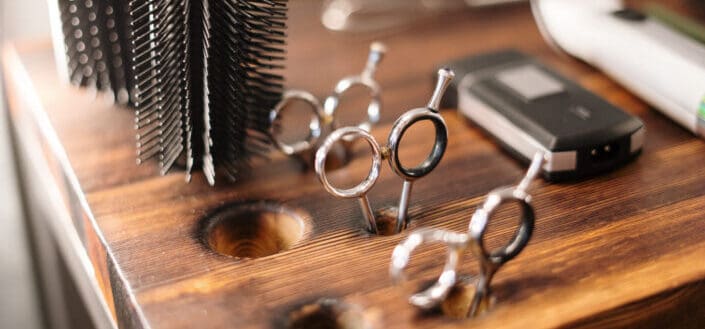
via: Pexels / cottonbro
After oiling your shears, store them with the blades closed, preferably in a protective case to prevent rusting.
Frequently Asked Questions
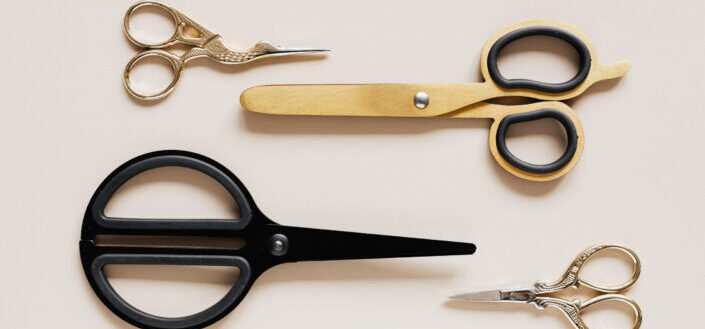
via: Pexels / Karolina Grabowska
You probably have no idea that a pair of scissors came with a long line of history, do you? Here are more facts you need to know about these nippers.
Why are scissors called a pair?
A pair of scissors is called a pair because it consists of two blades held together by a screw.
Who made the first scissors?
No one exactly knows who the mechanical genius is behind the invention of scissors. Still, the earliest pair was said to have originated in the Middle East four thousand years ago.
It wasn't during the eighteenth century when modern scissors were invented- all thanks to an Englishman named Robert Hinchliffe, who was the first to use steel to manufacture and mass-produce them in 1761.
Is scissors a simple machine?
Scissors are made up of two simple machines- a wedge and a lever, making them compound machines. Their blades are sharpened into wedges, and their handles that are squeezed together are levers.
What were the first scissors used for?
Before adopting their current look, scissors began as small shears made with a strip of bronze sharpened at both ends, curved, and made use of pressure applied by hand to cut.
During the 1800s, scissors were made for all sorts of purposes, such as cutting a piece of fabric, cigars, embroidery, eggs, and even umbilical cords during childbirth.
Why are hair-cutting scissors so expensive?
Haircutting scissors and barber scissors are made with higher quality materials and exceptional craftsmanship. Compared with cheap hair cutting shears, expensive ones are handmade by experts and are easy on the hands, perfect for a long day of cutting hair.
More Awesome Tools
What did I tell you about using the right tools? Yup. They matter. It makes your life easier and your home or do-it-yourself projects a lot less amateur.
- Much like a scissor, a saw is another popular cutting tool found in most households. Learn about the different types of saws through this article.
- Having mechanical tool sets always comes in handy for emergency home repairs. This guide will help you pick the best one.
- From manual to powered drills, this guide about the different types of drills is every handyman's best friend.
In Conclusion
What types of scissors do you already have at home?
Now that you're familiar with the different types of scissors, it should be easier for you to know the best one to use on your next project.
Be it for sewing, gardening, cooking, or hairdressing, having the right cutting tools is important for a job well done.

























